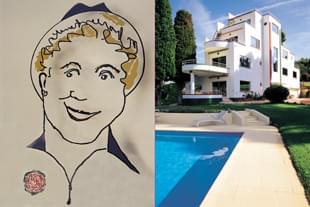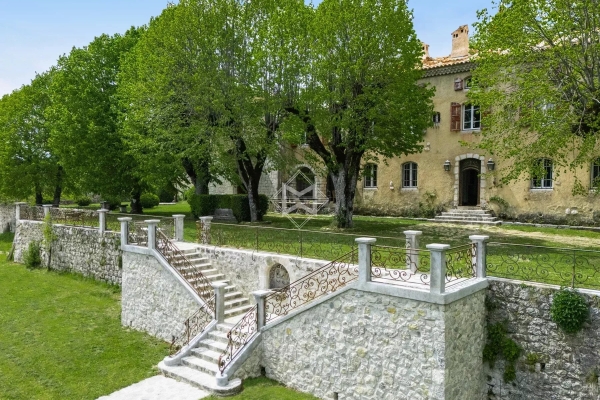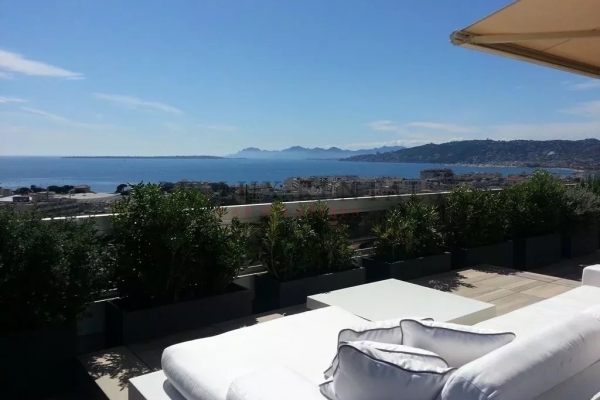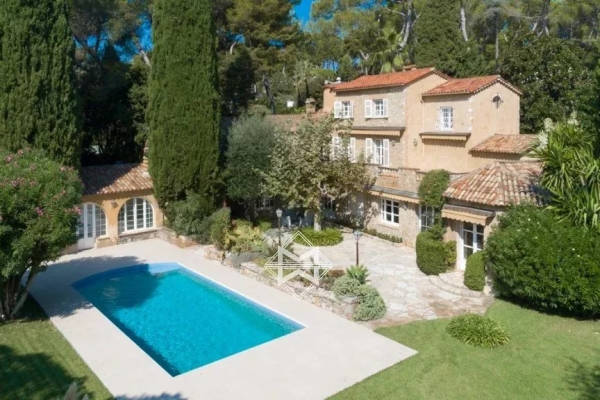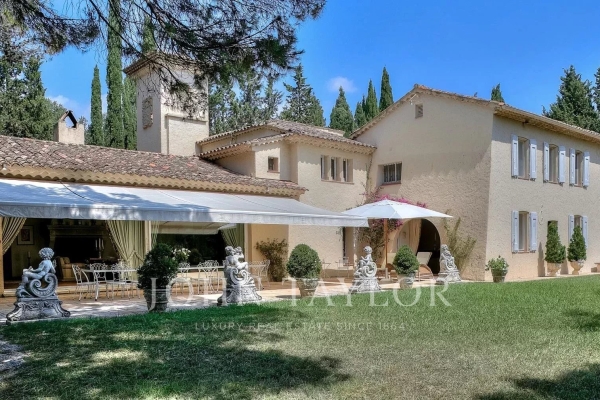Charles Trenet's house is for sale
A guided tour of the home of a famous ambassador of French song.
Not easy to conceal one’s emotions on entering the home of Charles Trenet, currently offered for sale. A guided tour of the den of this “monstre sacré”, an ambassador of popular French song...
“De toutes les routes de France, d’Europe, celle que je préfère est celle qui conduit en auto ou en auto-stop vers les rivages du midi… On est heureux, Nationale 7”. The “crazy singer” must have worked on the words of his famous ballad many times over while heading south to his home at Golfe-Juan.
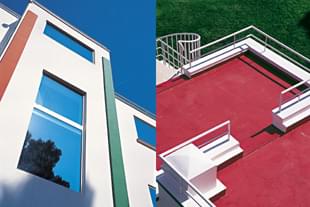

You can make it out from the road, though it disappears behind the sturdy emerald gate 6 metres high. Two stone lions on either side stare at passers-by. Two statues from “Beauty and the Beast”, a nod and a wink to Trenet’s accomplice, director Jean Cocteau. It was with him that Trenet discovered the land and built his imposing house in 1938. Then aged 25, the author-composer-singer, born in Narbonne, had just finished his military service. He had also written “Y’a d’la joie”, made famous by Maurice Chevalier. The few years he had spent as a duo with Johnny, and the “fleur bleue” period, were also already behind him. Thanks to Raoul Breton, who often visited him in his property on the Côte d’Azur, he made his first appearance at the Théâtre de l’ABC. Colette, Mireille and Max Jacob couldn’t praise him enough. Young audiences had found their idol.
Charles sketched out the plans for the house himself, taking inspiration from an architect who was fashionable at the time : Le Corbusier. The result was a huge ship, on four levels ! It incorporates themes dear to the Swiss master : roof terraces, a total lack of hierarchy in the façades, windows which give structure and, of course, pure clean lines. White was the natural choice. In “Le Corbusier”, Maurice Besset writes : “While the house is completely white, the design stands out without any transgression”. A real mariner’s wheel, portholes and a wooden ladder emphasize the reference to a ship. And the colours are just as surprising : red for the driveway and terraces, purple too for lines that soar to the top, but also blue and green. Colours that were also used at the time for the shutters. These flat expanses of colour give the building its character and underline its geometry, in a garden offering subtle sophistication.
A few properties now surround it on land where nature once held sway. In the distance, the sea, “qu’on voit danser le long des golfes clairs”... This song composed by Trenet with Léo Chauliac in 1943 in a train between Narbonne and Carcassonne, was recorded in 1946, flew around the world and was re-recorded over 4,000 times ! Trenet then deserted his ship to travel to Canada, America, Mexico and Peru. But he was soon back in France, staying several times at Golfe-Juan. With Mistinguette, he gave movie-screenings in a small stone amphitheatre at the back of the house.
Charles Trenet passed away in February, 2001, but the house still shows traces of the time he spent there. It’s no surprise to discover the kitchen with the same wood-panelling as in the bathrooms. And what a moving experience to step into the study ! You can’t miss the piano. A “Molière”, a dedication from the Lumières brothers, a “7 d’Or”, a “Victoire de la Musique”, the “Prix Grand Siècles”, a platinum disk… And his soft rimmed hat. The presence of the king of music-hall, the man of the stage, the genius of poetry and swing is palpable. Before the staircase, one stops in front of a portrait of Charles Aznavour, signed Laffite. And we learn that Trenet also liked to paint. His works can be viewed as one mounts the stairs. On the first floor we find his mother’s bedroom, the former reading-room, the dining-room. On the second, Trenet’s own quarters. A “night room” on the third floor, and a fitness room right at the top. It overlooks the top of two cypresses, planted 67 years ago in honour of Trenet and Cocteau.
Le Corbusier dreamt of “creating a new spirit”. And the singer with seven films, seven books and a thousand songs to his credit, revolutionized the music scene of his century. Within these walls, you can hear a distant and alluring voice : “Je chante, soir et matin ! Je chante sur mon chemin. Je chante, je vais de ferme en château”… And he’s the one who expresses it best : “Longtemps, longtemps, longtemps après que les poètes ont disparu, leurs chansons courent dans les rues”.
This superb article was published in issue N° 89 of the magazine
"Résidences Immobilier". To order your copy :
contact@residences-immobilier.com
By Laetitia Rossi - photos : Edith Andreotta
